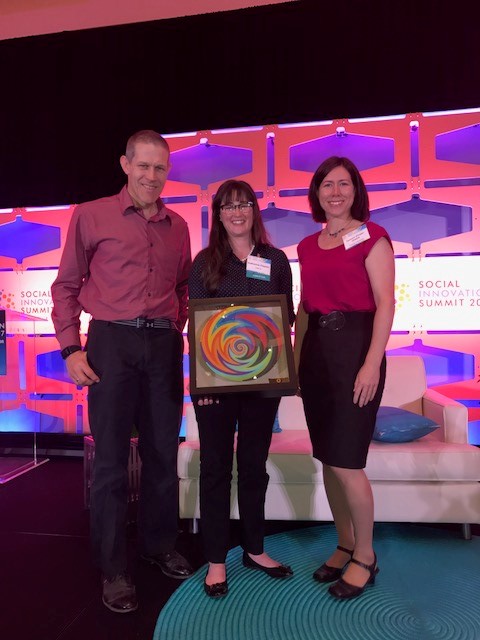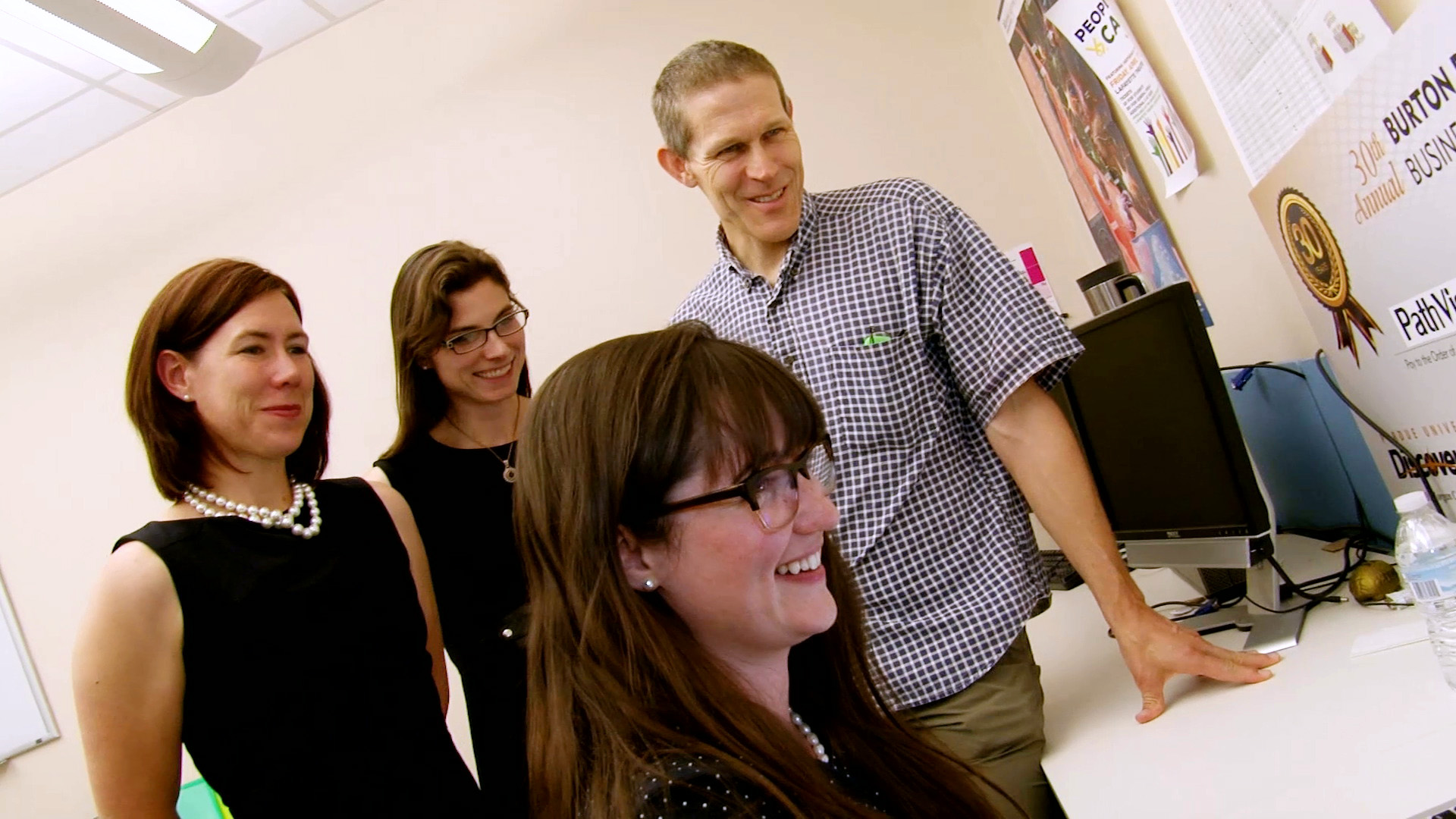Purdue researchers developing smartphone-enabled point-of-care disease detection platform
"Too many people worldwide are getting sick from preventable infectious diseases," said Tamara Kinzer-Ursem, an assistant professor in Purdue's Weldon School of Biomedical Engineering. "Cholera, HIV, malaria, and dengue are all prevalent, but preventable pathogens. We are on a mission to take these powerful devices that you carry around every day and turn them into laboratories to detect disease."
Kinzer-Ursem developed the technology, called PathVis, along with Jacqueline Linnes, an assistant professor in the Weldon School of Biomedical Engineering, Steven Wereley, a professor in the School of Mechanical Engineering, and Katherine Clayton, a graduate student researcher in the School of Mechanical Engineering.

The research won first place in the annual Wireless Innovation Project and will receive a $300K grant ($100K/year for three years) from the Vodafone Americas Foundation. The award was announced June 7 at the 2017 Social Innovation Summit in Chicago and is the latest award of many awards the project has received in the past six months for the technology and business plan.
The existing technology can be categorized in two ways: one is a fluorescence technology that is accurate, but expensive to make and to use. The other is a rapid diagnostic device based on flow strip technology, such as a pregnancy test, which is inexpensive, but not very accurate; a lot of pathogen or antigen must be present to yield a positive diagnosis.
PathVis is a breakthrough technology that uses a completely different measurement methodology; it measures the viscosity of a sample on a smartphone.
A sample is placed in a test cartridge with disease specific-reagents and some small beads. The test cartridge is then placed under a smartphone camera. If a pathogen is present, a chemical reaction increases the viscosity of the solution and hinders the movement of the beads. If a pathogen is not present, the solution maintains a low viscosity, and the beads move easily. The particle motion is measured and analyzed via proprietary algorithms in a smartphone application.
The device is being developed to detect cholera, a disease that can kill within hours if left untreated.
Currently, the presence of cholera in a water source is detected retroactively after an infected person develops symptoms, said Kinzer-Ursem. By that time, cholera has been incubating in the body for up to a week. Health workers go to the patient’s village and through case-based finding target the source of cholera in the water. Samples are collected and an additional 3-5 days are needed to incubate that sample in the lab before it can be tested. The prolonged process increases the risk of additional infections.
With the PathVis device, the entire process, from sample collection to test result, takes about 30 minutes. The algorithms in the smartphone app then use the Global Positioning System to geotag and time-stamp data and upload it to the cloud. This will enable aid organizations and governments to proactively monitor the detection of disease in real time and take quick take action as needed to deliver clean water and initiate a public health campaign.
 The researchers are collaborating with the University of Florida's Emerging Pathogens Institute in Gressier, Haiti, to conduct field tests for cholera in the fall of this year. The team is also developing the platform to detect multiple diseases.
The researchers are collaborating with the University of Florida's Emerging Pathogens Institute in Gressier, Haiti, to conduct field tests for cholera in the fall of this year. The team is also developing the platform to detect multiple diseases.
"The exciting part of this is the broad application space that this fundamental technology has," said Kinzer-Ursem. "We are also detecting different diseases such as malaria and HIV. The platform can be readily adapted to other important pathogens in the future."
Top photo: Members of PathVis (left to right) Steven Wereley, a professor in the School of Mechanical Engineering, Katherine Clayton, a graduate student researcher in the School of Mechanical Engineering, and Tamara Kinzer-Ursem, an assistant professor in the Weldon School of Biomedical Engineering, at the 2017 Social Innovation Summit after winning first place in the annual Wireless Innovation Project.
Bottom photo: PathVis at work (left to right): Tamara Kinzer-Ursem, an assistant professor in the Weldon School of Biomedical Engineering; Jacqueline Linnes, an assistant professor in the Weldon School of Biomedical Engineering,;Steven Wereley, a professor in the School of Mechanical Engineering; and (front) Katherine Clayton, a graduate student researcher in the School of Mechanical Engineering.
Sources:
Katherine Clayton, claytok@purdue.edu
Tamara Kinzer-Ursem, tursem@purdue.edu
Jacqueline Linnes, jlinnes@purdue.edu
Steven Wereley, wereley@purdue.edu
